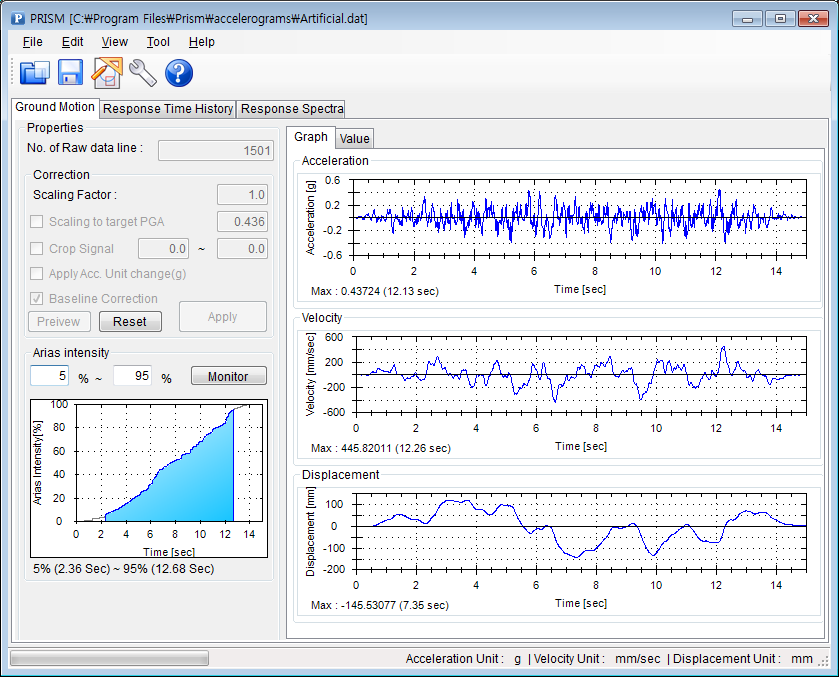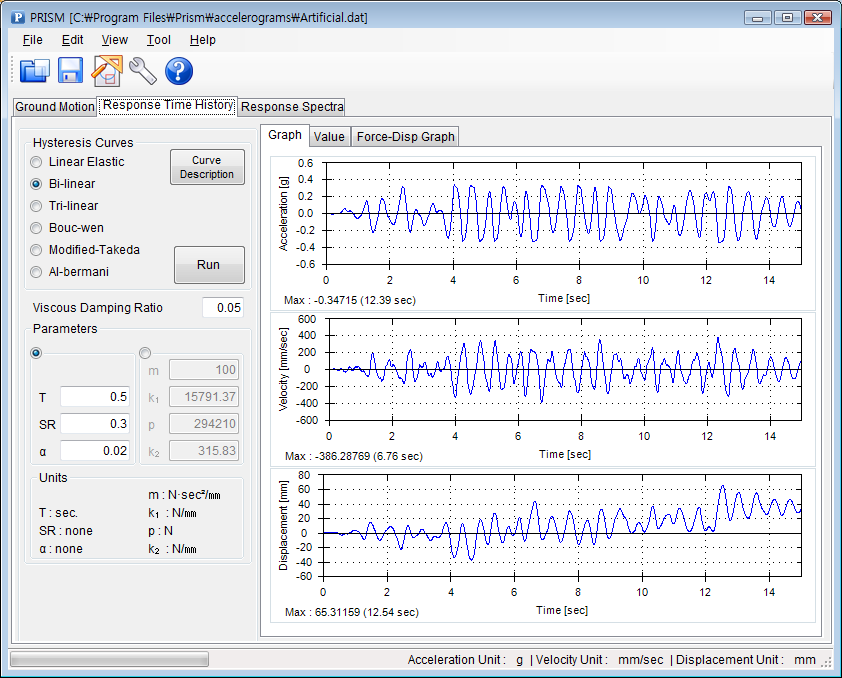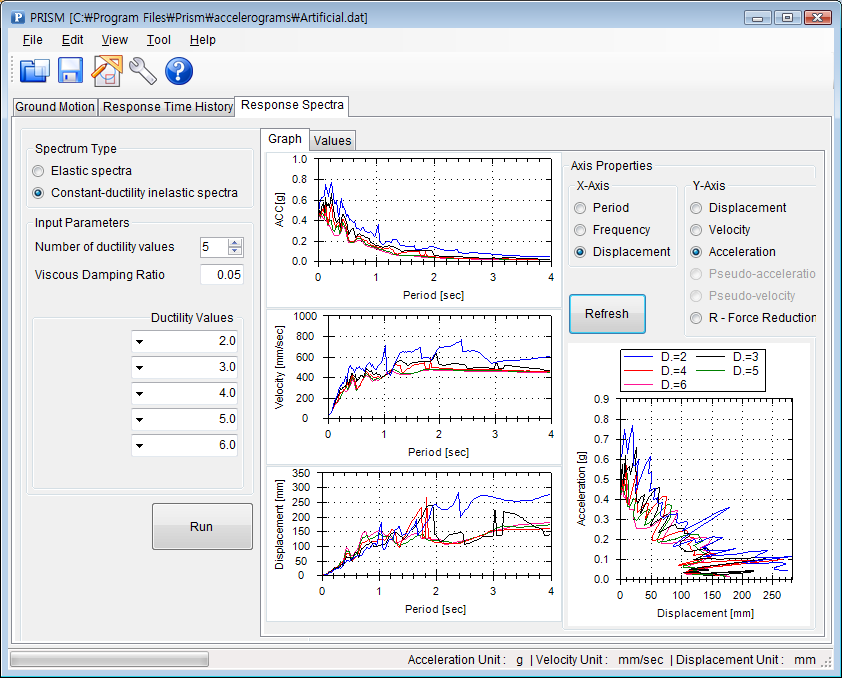|
PRISM© is a free program for seismic response analysis of structures idealized as single-degree-of-freedom systems. The main features of the program include modification of earthquake records, calculation of response time histories of various hysteresis models, and generation of elastic and inelastic response spectra.
Main features are:
· Modification and correction of earthquake records
- Scaling and truncation of earthquake records
- Baseline correction
- Calculation of Arias intensity
· Inelastic response history analysis
- Application of various hysteresis models: Linear elastic, Bi-linear, Tri-linear,
Modified Takeda, Bouc-Wen, and Al-Bermani
- Calculation of acceleration, velocity, and displacement response histories
- Monitoring force-displacement relationships
· Generation of response spectra
- Generation of elastic spectra
- Generation of constant-ductility inelastic spectra
- Representation of spectra in various formats
Installation is not required.
PRISM© is simple and easy. Please download prism.zip from the link below, extract and save the prism folder on any place of your hard disk, and run prism.exe.
PRISM is available at the link below.
[DOWN LOAD] PRISM for Earthquake Engieering v.1.1 (1.0MB)
[DOWN LOAD] User's Manual for PRISM v.1.1 (pdf - 0.3MB)
Screen shots of PRISM
|
· Modification and correction of earthquake records

|
|
· Inelastic response history analysis

|
|
· Generation of response spectra

|
Prism is developed to provide engineers, researchers and students with a tool to easily investigate seismic responses of structures. Users may make and distribute unlimited copies of the program in its original form.
|





